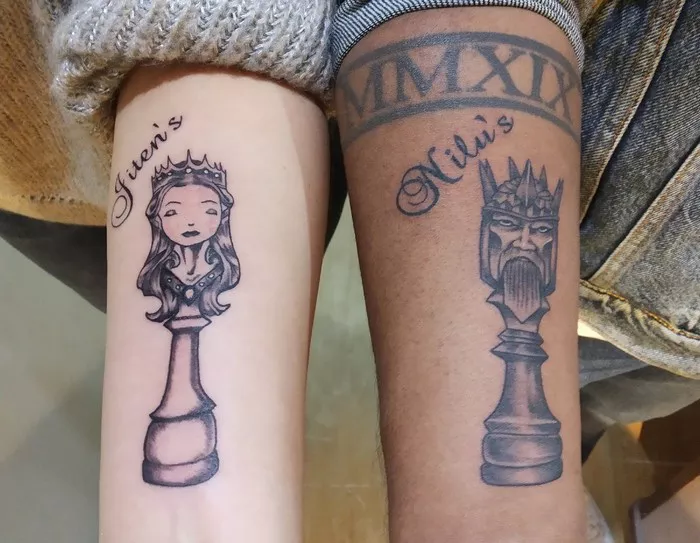Getting a tattoo is a significant decision, marked by both excitement and apprehension. One of the most common concerns among first-timers and seasoned enthusiasts alike is the level of pain involved. While pain tolerance varies from person to person, certain factors can influence how painful a tattoo feels. In this detailed guide, we’ll explore various aspects of tattoo pain, factors that affect it, and which tattoo placements tend to hurt the least. By the end, you’ll have a clearer understanding of what to expect when you sit down in the tattoo chair.
Understanding Tattoo Pain
Tattoo pain is subjective and can depend on several factors:
1. Location: Different parts of the body have varying levels of sensitivity due to differences in skin thickness, nerve endings, and proximity to bones and major organs.
2. Size and Complexity: Larger and more intricate tattoos typically take longer to complete, exposing your skin to prolonged discomfort.
3. Individual Pain Threshold: Everyone experiences pain differently. Factors such as age, overall health, and mental state can influence how sensitive you are to tattoo pain.
4. Artist Skill and Technique: A skilled tattoo artist can minimize discomfort through proper technique and a steady hand.
Tattoo Placements that Tend to Hurt Less
When choosing a tattoo placement to minimize pain, consider these areas known for their relative comfort:
1. Outer Shoulders: The outer shoulder area is fleshier and less sensitive, making it a popular choice for first-time tattoo recipients.
2. Upper Arms: The upper arm, particularly the outer portion, tends to be less painful due to muscle and fat cushioning.
3. Calves: The calves have more muscle and thicker skin compared to other areas, which can reduce pain during tattooing.
4. Thighs: Similar to the calves, the thighs offer a good balance of muscle and fat, making them less painful for tattoo placement.
5. Forearms: The outer forearm, away from the wrist and inner elbow, can be relatively painless for many people.
Factors Influencing Tattoo Pain
Several factors can influence how much a tattoo hurts:
1. Skin Thickness and Sensitivity: Areas with thicker skin and fewer nerve endings typically experience less pain.
2. Bone Proximity: Areas directly over bones or joints, like the ribs, spine, and ankles, tend to be more painful due to less cushioning.
3. Frequency of Sessions: Multiple sessions to complete a tattoo can extend discomfort over time.
4. Personal Pain Tolerance: Your unique ability to endure pain will play a significant role in your tattoo experience.
See Also: What Tattoo Symbolizes Good Luck: Things You Need To Know
The Role of Endorphins
When your body experiences pain, it releases endorphins, which are natural painkillers. During a tattoo session, the initial pain might trigger the release of these chemicals, which can help reduce discomfort as the session progresses. This is why some people report that the pain becomes more bearable after the first few minutes.
Preparing for Your Tattoo Session
Proper preparation can make a significant difference in how you experience tattoo pain. Here are some steps to help you get ready:
1. Get Adequate Rest: Being well-rested can improve your pain tolerance.
2. Stay Hydrated: Proper hydration can improve skin elasticity, making the tattoo process smoother.
3. Eat a Balanced Meal: A nutritious meal before your session can help maintain your energy levels and stabilize your blood sugar, reducing the risk of feeling faint or dizzy.
4. Avoid Alcohol and Caffeine: Both substances can dehydrate your body and make your skin more sensitive.
During the Tattoo Session
Your behavior and mindset during the tattoo session can also influence your perception of pain. Consider the following tips:
1. Practice Deep Breathing: Deep breathing techniques can help you stay calm and manage pain more effectively.
2. Bring Distractions: Listening to music, watching a movie, or chatting with a friend can divert your attention from the pain.
3. Communicate with Your Artist: Let your tattoo artist know if you’re experiencing too much discomfort. They can take breaks, adjust their technique, or offer other ways to help you manage the pain.
Aftercare and Pain Management
Proper aftercare is crucial not only for the healing process but also for managing any lingering pain or discomfort. Follow these steps to ensure a smooth recovery:
1. Follow Your Artist’s Instructions: Your tattoo artist will provide specific aftercare instructions. Follow them closely to prevent infection and promote healing.
2. Keep the Area Clean: Wash your tattoo gently with mild soap and water, and avoid submerging it in water for extended periods.
3. Moisturize Regularly: Keeping your tattoo moisturized can prevent itching and irritation.
4. Avoid Tight Clothing: Wear loose, comfortable clothing to avoid rubbing against your new tattoo.
5. Manage Pain with Over-the-Counter Medication: If you experience pain or swelling, over-the-counter pain relievers like ibuprofen can help.
Common Misconceptions About Tattoo Pain
Several myths surround tattoo pain, and it’s essential to separate fact from fiction:
Myth: Tattoos Over Fatty Areas Hurt Less: While fatty areas can provide some cushioning, they are not always less painful. The density of nerve endings and skin sensitivity play a more significant role.
Myth: Small Tattoos Hurt Less: The size of the tattoo doesn’t always correlate with pain. Small tattoos can be just as painful, especially if they are in sensitive areas.
Myth: Pain is Unavoidable: While some discomfort is inevitable, there are numerous ways to manage and minimize tattoo pain, as discussed above.
Conclusion
Choosing to get a tattoo is a personal and often transformative decision. While pain is a part of the process, understanding the factors that influence it can help you prepare mentally and physically. By selecting less sensitive areas and following practical tips, you can enhance your tattoo experience and ensure a smoother session. Remember, each person’s pain tolerance is unique, so what hurts least for one person may differ for another. Ultimately, your tattoo journey should be as comfortable and rewarding as possible, reflecting your individual style and personality.

